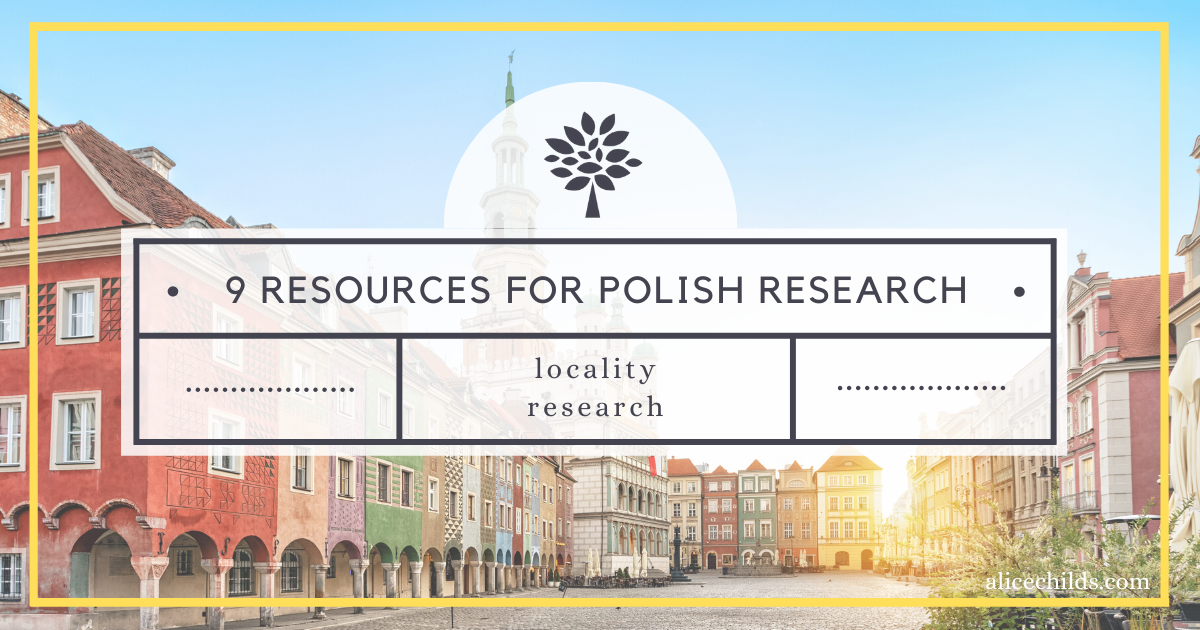
I recently completed a Polish research project. Some of the DNA matches I contacted in the process of conducting the DNA portion of the research provided some valuable resources for Polish research (especially in the Lemko region of Southeastern Poland formerly known as Galicia). I referred to some of these resources in my Research Like a Pro podcast interview, and I thought I would share links to them here:
Lemko Village Resource Guide – Gives a list of all the Lemko villages. When you click on the village, it will tell you a little about the village, about the church, and give you a list of surnames of the people that lived in the village taken from a 1787 Cadastral census. Keep in mind that this was from 200+ yrs ago and people have moved around since that time, but it does help to get started looking at where a certain family started out. It will also tell you the sister villages associated with the village, and with whom they might have shared a priest.
Dictionary of Lemko Surnames – The list of Lemko Surnames and villages where that surname was found, also collected from the 1787 Cadastral census. This list is useful if you do not know what village your family surname was from: it will give you an idea of where to start looking. Remember that this list was compiled in 1787, so it’s just a starting place. Some families stayed in the village for hundreds of years but others might have moved around. At the top of the page, you can click and it will change the names to Cyrillic letters and you can see how the surname was written in their own language.
Rafal’s Surname List – An alphabetical list of surnames submitted by those researching ancestors of Polish ethnicity or those who lived in Poland (occupied territories or present-day boundaries). This includes ancestors of Lithuanian, Ruthenian, Ukrainian, or German ethnicity living in the former Russian-Poland, German-Poland, Austrian-Poland, Galicia, Silesia, and East/West Prussia.
The Gesher Galicia Town Locator – A website containing jurisdiction information for villages found in the Austrian province of Galicia. It will list the administrative district, judicial district, Roman Catholic parish, Greek Catholic parish, and any other applicable religious jurisdiction, including Evangelical and Jewish congregations.
The Przemysl Archives – Holdings include digital records up until about 1870. To find church records, right-click on the page and choose “Translate to English.” Then, enter the number 142 in the “Team” field. This will get you directly to the “Archiwum Greckokatolickiego Biskuptswa w Przemyslu,” or Archives of the Greek Catholic Bishopric in Przemysl.
You will see a column for “Signatures” at the far left. Signatures for the church books begin with 56/142/0/6613 and run through 56/142/0/8032. Scroll down until you get to these signatures.
The church books are grouped alphabetically by deanery. Within the deanery the villages are listed alphabetically by the main village, and then its sister villages. All the way to the right is the time frame of the records. Once you have located the deanery, village, and years you need, click on the signature at the left to go to the digitized village book. Then page through the book to find records for your ancestors.
You will need to figure out how the records are laid out for the village and its sister parishes. Some records are grouped births, marriages, and deaths for 10 years for the main village and then the same for each sister village, but some village books are grouped by ALL births, marriages and deaths for the whole timeframe — for the main village and then all for each sister parish. Other books are grouped one year at a time, births, marriages and deaths, for the main village and then each sister parish. The grouping of records depends on how the priest chose to organize the records, and sometimes throughout the years the organization changed as the priest changed, so make sure you are looking at the right year for the correct village. Often the name of the village is written at the top at the beginning of the years record. or on a page before the years records start.
Search the Archives – Poland’s National Digital Archives. Look here for records after 1870. Some are digitized, some are not. I was able to determine that the records I needed were not yet digitized, so I haven’t used this site very much, but FamilySearch has created a guide for using it here.
If you find that the records you need are not digitized, you may decide to hire a researcher in Poland to look up the records for you. Here is one that was recommended to me:
Maciej Orzechowski – Maciej offers Research Services in the Przemysl Archives for $35 USD per hour.
I hope these resources will help you get started with your own Polish Research. For additional help, visit the Poland Genealogy Page and the Austrian Poland (Galicia) Page on the FamilySearch Research Wiki.
